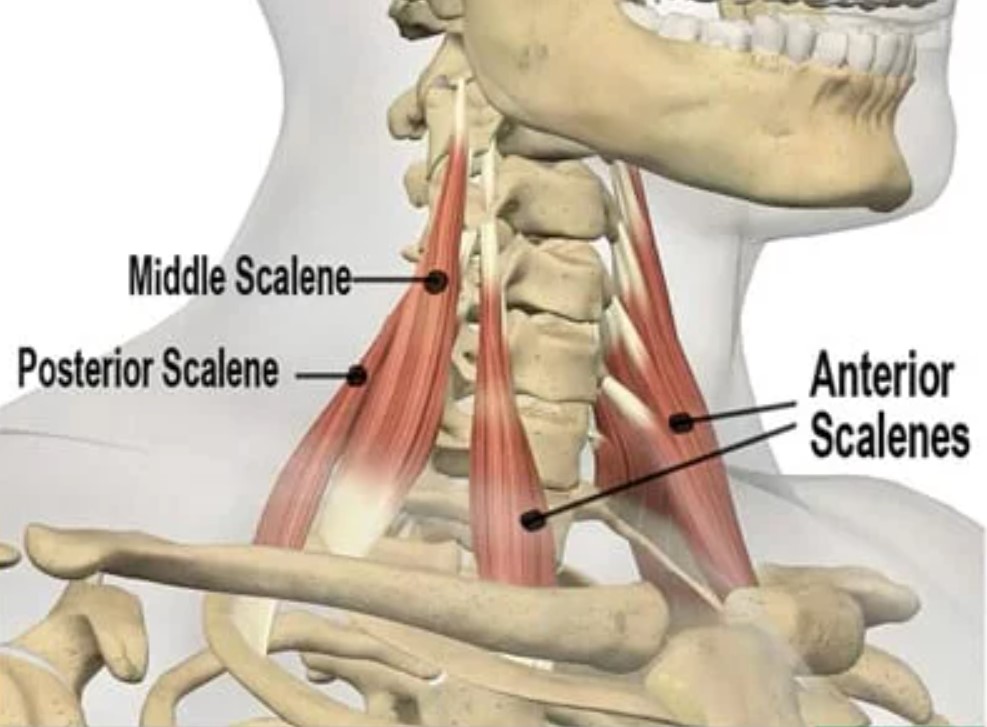Breathe your neck pain away
Suggest them to lay flat on their back for 10 minutes with bend knees, while breathing gently through the nose and making expiration longer than inspiration.
If this changes the tension or pain in the neck, then you know which track to follow in your further treatment.
Explain to your client in this simple way why their breathing affects their neck
The scalene muscles may be tight because they are helping respiration when the fight and flight response is activated. In these cases breathing becomes more shallow and faster and involves the scalenes. They have another important job of supporting the heavy head and bending it from side to side. If the extra job as helper for respiration lasts over a long time, they may get overloaded and develop an inflammatory process and pain at the attachments to the cervical spine.

The diaphragm is not just an element but a body structure *)
The scalene muscles are fascially connected to the respiratory diaphragm. In fact, the diaphragm is related to and has an influence on everything from the floor of the mouth to the pelvic floor!
Stress and/or respiratory issues causes tension in the diaphragm and this continuous pull extends along the fascia all the way up to the neck.
What you can do to change chronic neck pain?
With this type of chronic neck pain we recommend breathing exercises/advice combined with reflexology for the diaphragm and phrenic nerve plus a lot of focus on balancing the fight and flight response.
As homework we suggest the same exercise as mentioned in the beginning of this article. A few exercises for the neck - and abdominal muscles are also a good idea.
*)
Ryesgade 27
DK-2200 Copenhagen N
Denmark
Tel: (+45) 2575 7047
Email >






